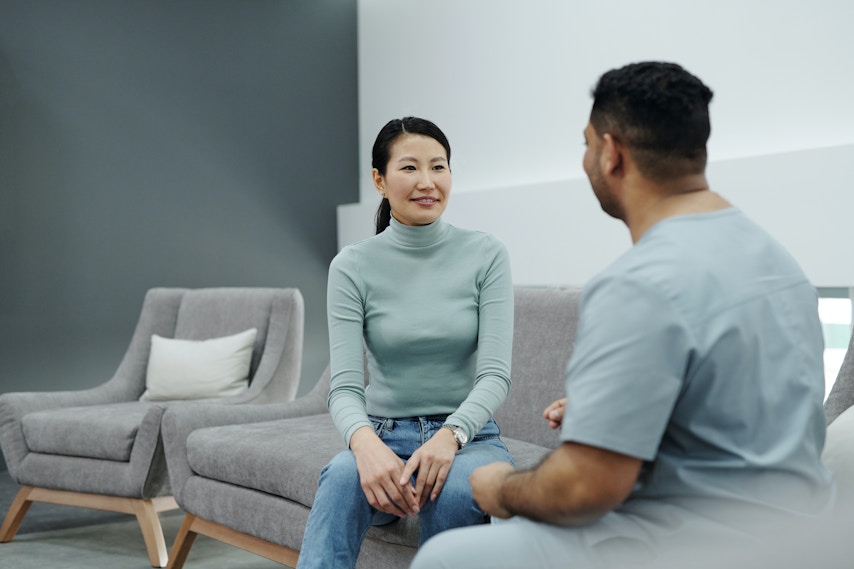Closing the Tech Gap: How Business Advisors Can Help Clients Build Out Their Tech Stack

It used to be that automation was only available to large enterprises (think big businesses with deep pockets).
But the world of SaaS is evolving. Now, there’s a new wave of solutions helping SMEs and mid-market businesses unlock the power of automation, integration and data ownership. The problem is many small businesses don’t know where to start in defining their own software needs. They know they have a tech gap but may not know how to close it.
During our latest webinar, we spoke to some friends in the advisory space about what small business advisors can do to help their clients close this tech gap. Turns out there’s a lot. Read on for the full recap.
Featured voices in this webinar:
Adam Flight of Moore Kingston Smith
Zoe Wilson of Re-think HR
Emma Cohen from Raffingers
What’s the tech gap, and why does it exist?
So what is this ‘tech gap’ we keep going on about?
Put simply, it’s the gap between the existing processes a business uses and the efficiencies it could gain by automating these. In the last few years, we’ve witnessed a lot of exciting digital transformation, but this has yet to trickle down and benefit every business.
There are many reasons for this, the main one being fear of the unknown. Adam says that it can be challenging for them to open up if you're trying to introduce a client to something new.
“If they haven’t heard of it or haven’t been educated on what it can do for their business, it can be difficult to advise clients on the benefits of a specific product.”
Adam Flight
Lack of integration is another. In Zoe’s experience, many businesses, both small and large, find it difficult to connect the dots between their systems. For example, they might have invested in a great piece of software but are using this alongside less intuitive tech and haven’t quite realised they can link all these systems together.
Some clients may also find it hard to leave behind tools they’re comfortable and familiar with. We all know that Excel can be overwritten and isn’t very GDPR compliant, for instance. But if a client uses a set of spreadsheets they've loved for years, it can be challenging to let go and try something new.
Here’s the rub: the bigger a business gets, the more difficult it becomes to break down these silos. That’s why it’s crucial to get ahead of these problems by starting conversations early on with clients before they scale and are stuck with systems that no longer serve them.
Where are businesses getting stuck?
If we know why this gap persists, it should be easy to bridge, right? Well, it’s a little more complicated than that.
As Adam previously mentioned, getting people on board with change can be very difficult if they don't know what they don't know. ‘It can be scary for someone in that business to stick their head above the parapet and say ‘let’s give this a go’.
But there’s also the problem of having new systems already in place that aren’t being used. As Emma puts it:
"Many of these companies have bought new software but may not be using it to its full potential. For example, they might have already implemented a piece of tech but haven't learned how they should be using it."
Emma Cohen
It could be a client is simply blissfully unaware of what a specific software can do. Or, there aren't enough in-house resources to invest in the proper maintenance and set-up of a new system. No matter the cause, it’s clear there is an opportunity for business advisors, their clients and even the software providers to come together to improve implementation.
But first, let’s look at what business advisors, in particular, can do to drive change.
What is the role of the business advisor?
As mentioned at the start, there’s a lot business advisors can do to advise clients on building their tech stack. In fact, it’s the guidance and support business advisors offer that make them perfectly positioned to help out.
True, advisors can’t know about every product out there. But with a broad understanding of the marketplace, they can offer a lot in terms of confidence and resources.
Scope out client needs
A full scoping process is a must for any business advisor who wants to help clients build out their tech stack.
As Zoe explains, this needs to be really thorough and involve all stakeholders, not just those directly involved: “proper exploration needs to happen early on before going out to the market and getting to the demo stage”.
Assess the risks
Not every stakeholder will want to roll their sleeves up and get ‘stuck in’. In other words, some stakeholders won’t want to dig into all the risks and knock-on effects that are associated with bold transformation.
This is an area you can really shine as a business advisor by offering support in assessing and managing those risks and proactively providing solutions.
Be that ‘go-to’ person
Emma jokes that in her line of work, she often feels like a therapist. Advisors can often become the ‘ear’ of the client - they’re the ones clients go to when they feel apprehensive, want advice, or are just general uncertain.
Advisors who take the time to really listen to their client's concerns and needs will often be the most effective in helping them invest in the right tools and technology.
What can advisors do on an ongoing basis?
Beyond helping clients scope their needs and support the implementation process, the ongoing relationship between advisors and clients is extremely important. It’s crucial to review your client’s tech stack periodically to check they are using tech efficiently. If software isn’t being used to its full potential, these check- ins can be an excellent opportunity to understand where there are barriers and provide clients with the right education to overcome these.
Adam reminds us that software lifecycles are much shorter these days than they used to be, meaning clients can outgrow solutions in just a few years. That may mean you need to make a few pivots. After all, businesses change all the time, and so do their needs.
What practical steps can advisors take?
And now for some more practical tips to kickstart your tech advisory journey.
You have to have bu-in from all stakeholders. No matter how much work you do at the scoping and exploration stage, if there are teams that still don’t understand the ‘why’ behind the investment, you won’t be able to move forward.
Focus on ROI and functionality. Yes, it’s important to work within the budget cap. But if you lead with cost, that will become the driving factor behind any client’s decision-making. At the same time, it’s not always the most expensive vendor that turns out the be the best fit. Advisors should be able to question the budget and confidently communicate a system's potential ROI.
“When we do the selection process, taking clients through different demos of products, we actually hide the financials from them. We do this so they can really focus on functionality and seeing which software will suit their needs rather than getting stuck on price.”
Zoe Wilson
Get acquainted with and partner with the software providers. It’s important to know the market at a minimum. You can go that one step further by really ‘niching down’ on the kind of software you want to specialise in and even partner with these vendors.
“Get to know the software. Get out there, make connections, and become partners with the likes of PayFit and other providers. That way, they can act as a sort of ‘back-office’ support team you can go to with questions.”
Adam Flight
Honesty is the best policy. Be open and honest with clients about where your knowledge begins and ends. Define what you can and can’t offer. That way, you don’t risk spreading yourself too thin and can focus on delivering good quality advice.
Last (but not least) be bold. Don’t be afraid of being bold. Remember, your clients are coming to you for your expertise. If you feel strongly about a certain direction they should take, trust that expertise.
“Just be bold! If you see that there’s potential to implement that within their business and that it will make a huge difference, put it forward. Nine times out of 10, they;ll be so grateful that you have recognised that and can help them. So have that confidence!”
Emma Cohen
Whether an accountant or HR consultancy, advisors can offer incredibly valuable tech advice and play a crucial role within the software ecosystem if they're up for it.
Advisors can support clients in defining their technological needs and identifying the right solutions to plug these gaps. But it goes far beyond simply helping stakeholders buy the right software. From connecting the dots with integration to being that ‘go-to’ person your clients can rely on for ongoing support, there’s a lot business advisors can do to help close the tech gap.
Become a PayFit Partner
Are you an accountant or HR consultant keen to help your clients transform their payroll?
Becoming a PayFit partner not only gives you access to one of the best payroll solutions in Europe, it also unlocks a whole world of CIPP payroll expertise to better support clients. We can help you help your clients in taking the first step towards fully automated payroll. In addition to this, you get access to regular content and events on compliance, regulation and industry trends.








